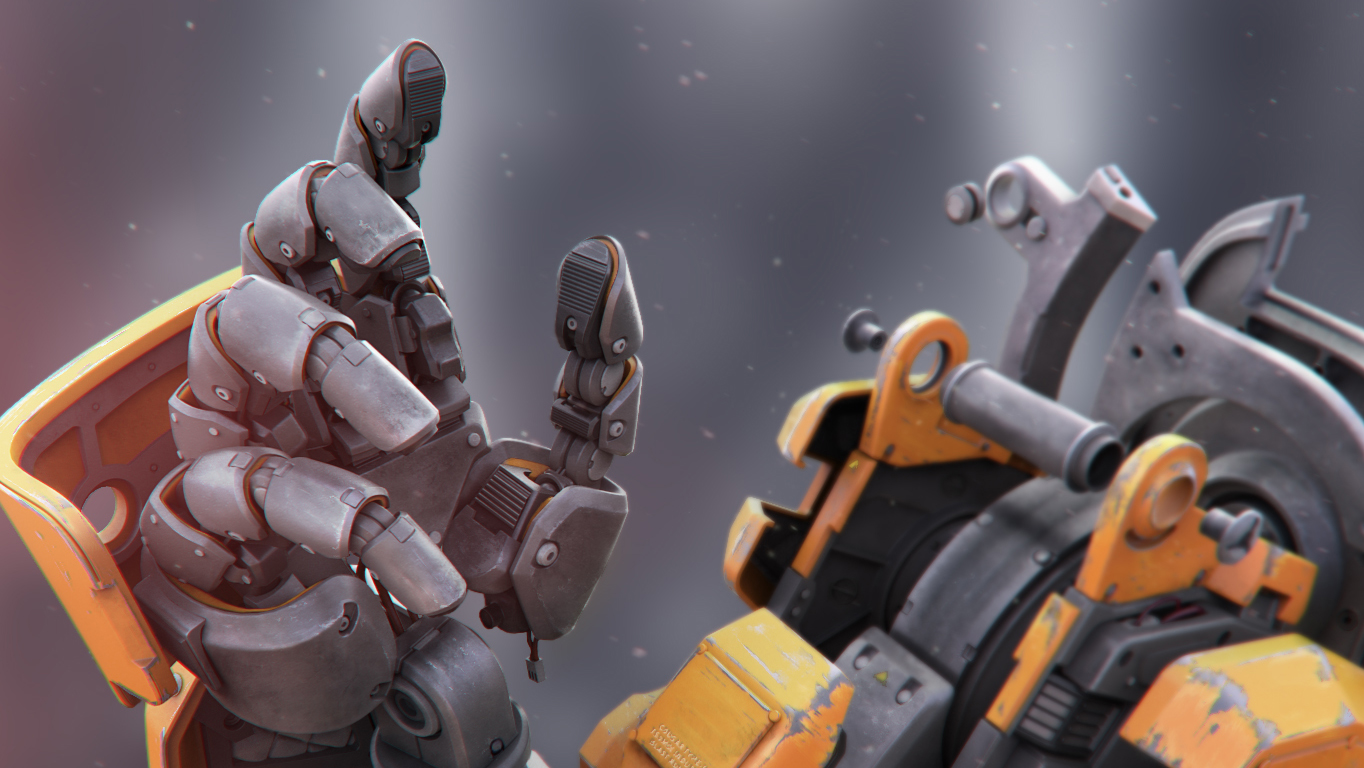Make it look natural. Those words are easy to say. Liz Kirby makes it look easy to do. She has refined her talent in game development, taking on any software to perfect here style across the game dev gamut from storyboarding and modeling to texturing and animation, and now as an Environment Artist at 343 Industries, makers of the Halo franchise. In the process she uses KeyShot to develop quick light and material studies. Here, she tells us how she got started and what makes KeyShot an important tool to have.
Liz Kirby
Modeling software used: Autodesk Maya / Pixologic ZBrush
Website: kirbyhasaportfolio.com
 What first sparked your interest in becoming an 3D/environment artist?
What first sparked your interest in becoming an 3D/environment artist?
I grew up in a very rural area, where all I saw for years were TREES and MORE TREES. As interesting as the deep woods can be, I grew to appreciate a lot of different environments because of it. They all have their own story and can be as deep and complex as the characters that inhabit them. As for 3D… that was a happy accident! I wanted to be a concept artist initially, but I found I enjoyed 3D more while in school, so I refocused.
What are some highlights throughout your career?
Working at 343 Industries is by far my greatest highlight. I’ll admit, it’s the only game job I’ve had so far, so it’s kinda my only highlight, but everyone at 343i is so ridiculously talented, it’s hard not to learn something new every day. I’ve grown a lot thanks to everyone there.
 What would you say is unique about your approach to a project?
What would you say is unique about your approach to a project?
I like to paint/sketch on just about everything. If lighting doesn’t seem right, I do a paint over. If the design doesn’t seem right, I do a paint over. I’m very hesitant to dive right into a project, and I’m quicker in Photoshop/on a drawing pad than I am in 3D, so I sketch things out. Probably a remnant from my days of wanting to be a concept artist.
What is your primary 3d modeling software? Why?
Autodesk Maya and Pixologic ZBrush. I used to be a MAX user, but I’ve shifted more towards Maya in the past couple of years for work. I’m not terribly picky with modeling packages, so if I have to switch, I’ll switch. I think both programs have their advantages. I always rely on ZBrush for organic meshes, however, since tools like Dynamesh are invaluable to that process.
Where in the process do you use KeyShot?
Keyshot has a firm hold on my rendering pipeline, though I’ll also drop my models in regularly as I work to check lighting and materials. KeyShot gives me the best representation of a finished scene without having to wait on test renders, so I can catch anything wrong with my scene in seconds.
What makes KeyShot an important tool to have?
KeyShot is an incredibly intuitive, robust program. It’s not overwhelming to use, but still very powerful. Setting up renders used to be the bane of my existence, but KeyShot has made it remarkably easy. It’s just a fast, reliable program. If I mess up a render, I don’t have to wait ten hours for another one, KeyShot saves time without losing quality.
What advice would you give to someone interested in doing what you do?
Learn foundations and traditional art. This is just my opinion, but I don’t think 3D art should be the start of an artistic career. Anatomy, design, composition, color theory, etc., should come first, way before you push your first vert. The transition to 3D art will be much smoother when you have foundations laid out for it.
Blast Runner Tutorial
Liz has put together an in-depth Blast Runner Tutorial that walks you through the process of how she created the Blast Runner image you see above. She breaks down the passes to use, along with how to create realistic texturing showing how a little dirt/love can go a long way.
“While modeling, also be mindful of material IDs, so you can easily assign materials and later render a clown pass (above) to make post-processing significantly easier, which is an option in Keyshot 5 under Render Options → Passes → Clown Pass. I separated my materials by fabric, padding, wires, dark metals, light metals, and neutral metals.”





